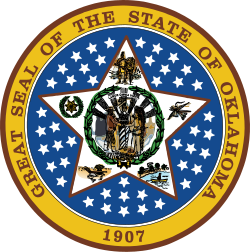 |
|---|
| Year | Republican | Democratic | Third party(ies) | |||
|---|---|---|---|---|---|---|
| No. | % | No. | % | No. | % | |
| 1908 | 110,474 | 43.33% | 122,363 | 47.99% | 22,146 | 8.69% |
| 1912 | 90,786 | 35.77% | 119,156 | 46.95% | 43,859 | 17.28% |
| 1916 | 97,233 | 33.25% | 148,113 | 50.65% | 47,070 | 16.10% |
| 1920 | 243,831 | 50.11% | 217,053 | 44.61% | 25,726 | 5.29% |
| 1924 | 226,242 | 42.82% | 255,798 | 48.41% | 46,375 | 8.78% |
| 1928 | 394,046 | 63.72% | 219,174 | 35.44% | 5,207 | 0.84% |
| 1932 | 188,165 | 26.70% | 516,468 | 73.30% | 0 | 0.00% |
| 1936 | 245,122 | 32.69% | 501,069 | 66.83% | 3,549 | 0.47% |
| 1940 | 348,872 | 42.23% | 474,313 | 57.41% | 3,027 | 0.37% |
| 1944 | 319,424 | 44.20% | 401,549 | 55.57% | 1,663 | 0.23% |
| 1948 | 268,817 | 37.25% | 452,782 | 62.75% | 0 | 0.00% |
| 1952 | 518,045 | 54.59% | 430,939 | 45.41% | 0 | 0.00% |
| 1956 | 473,769 | 55.13% | 385,581 | 44.87% | 0 | 0.00% |
| 1960 | 533,039 | 59.02% | 370,111 | 40.98% | 0 | 0.00% |
| 1964 | 412,665 | 44.25% | 519,834 | 55.75% | 0 | 0.00% |
| 1968 | 449,697 | 47.68% | 301,658 | 31.99% | 191,731 | 20.33% |
| 1972 | 759,025 | 73.70% | 247,147 | 24.00% | 23,728 | 2.30% |
| 1976 | 545,708 | 49.96% | 532,442 | 48.75% | 14,101 | 1.29% |
| 1980 | 695,570 | 60.50% | 402,026 | 34.97% | 52,112 | 4.53% |
| 1984 | 861,530 | 68.61% | 385,080 | 30.67% | 9,066 | 0.72% |
| 1988 | 678,367 | 57.93% | 483,423 | 41.28% | 9,246 | 0.79% |
| 1992 | 592,929 | 42.65% | 473,066 | 34.02% | 324,364 | 23.33% |
| 1996 | 582,315 | 48.26% | 488,105 | 40.45% | 136,293 | 11.29% |
| 2000 | 744,337 | 60.31% | 474,276 | 38.43% | 15,616 | 1.27% |
| 2004 | 959,792 | 65.57% | 503,966 | 34.43% | 0 | 0.00% |
| 2008 | 960,165 | 65.65% | 502,496 | 34.35% | 0 | 0.00% |
| 2012 | 891,325 | 66.77% | 443,547 | 33.23% | 0 | 0.00% |
| 2016 | 949,136 | 65.32% | 420,375 | 28.93% | 83,481 | 5.75% |
| 2020 | 1,020,280 | 65.37% | 503,890 | 32.29% | 36,529 | 2.34% |
| 2024 | 1,036,213 | 66.16% | 499,599 | 31.90% | 30,361 | 1.94% |
The politics of Oklahoma exists in a framework of a presidential republic modeled after the United States. The governor of Oklahoma is both head of state and head of government, and of a pluriform two-party system. Executive power is exercised by the governor and the government. Legislative power is vested in the governor and the bicameral Oklahoma Legislature. Judicial power is vested in the judiciary of Oklahoma. The political system is laid out in the 1907 Oklahoma Constitution.
Contents
- History
- Early history
- New Deal coalition
- Southern strategy
- 21st century
- Political institutions
- Executive
- Legislative
- Judicial
- Federal representation
- See also
- Notes
- References
- External links
Oklahoma is currently categorized politically as conservative. The state has a history of Democratic state government dominance. Oklahoma came into being as a state at the height of the era of Jim Crow Laws and had a Ku Klux Klan presence in the 1920s. Race politics gave way to Democratic political infighting over the New Deal in the 1930s and 1940s and the gradual growth of the Oklahoma Republican Party's power. As a result, Oklahoma has voted for Republican presidential candidates all but once since 1952 (in 1964), with the Democratic candidate having failed to pick up a single county in the state in all elections since 2004. [2] Today all of Oklahoma's federal offices and statewide offices, plus both chambers of the state legislature (with supermajorities), are either held by the Republican Party or are non-partisan. [3]
Until 1964, Oklahoma was considered a "swing state" in American politics, shifting back and forth in its support for the two major parties. This was in part due to Oklahoma's situation both as a part of the Great Plains states, which tended to be reliably Republican, and the South, which was heavily Democratic at that time. Between statehood and 1964, the state voted for the losing candidate just three times, in 1908, 1924, and 1960. However, Oklahoma voters would split their political allegiances by electing Democrats for local government, but Republicans for national office.









